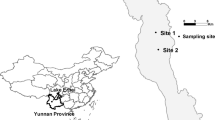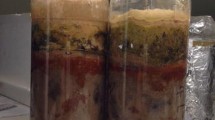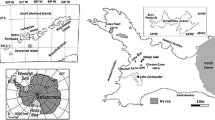Bacterial community dynamics were followed in a 19-day period during an induced diatom bloom in two freshwater mesocosms. The main goal was to compare diversity and succession among free-living (<10 MM) AND PARTICLE-ASSOCIATED (>10 mm) bacteria. Denaturing gradient gel electrophoresis (DGGE) of PCR amplified 16S rDNA showed the highest number of bands among free-living bacteria, but with a significant phylogenetic overlap in the two size fractions indicating that free-living bacteria were also important members of the particle-associated bacterial assemblage. Whereas the number of bands in the free-living fraction decreased during the course of the bloom, several phylotypes unique to particles appeared towards the end of the experiment. Besides the primer set targeting Bacteria, a primer set targeting most members of the Cytophaga-Flavobacterium (CF)-cluster of the Cytophaga-Flavobacterium-Bacteroides group and a primer set mainly targeting a-Proteobacteria were applied. PCR-DGGE analyses revealed that a number of phylotypes targeted by those primer sets were found solely on particles. Almost all sequenced bands from the bacterial DGGE gel were related to phylogenetic groups commonly found in freshwater: a-Proteobacteria, CF, and Firmicutes. Despite the use of primers intended to be specific mainly for a-Proteobacteria most bands sequenced from the a-proteobacterial DGGE gel formed a cluster within the Verrucomicrobiales subdivision of the Verrucomicrobia division and were not related to a-Proteobacteria. Bands sequenced from the CF DGGE gel were related to members of the CF cluster. From the present study, we suggest that free-living and particle-associated bacterial communities should not be perceived as separate entities, but rather as interacting assemblages, where the extent of phylogenetic overlap is dependent on the nature of the particulate matter.
Similar content being viewed by others
Author information
Authors and Affiliations
Rights and permissions
About this article
Cite this article
Riemann, L., Winding, A. Community Dynamics of Free-living and Particle-associated Bacterial Assemblages during a Freshwater Phytoplankton Bloom. Microb Ecol 42, 274–285 (2001). https://doi.org/10.1007/s00248-001-0018-8
Received:
Accepted:
Issue Date:
DOI: https://doi.org/10.1007/s00248-001-0018-8




